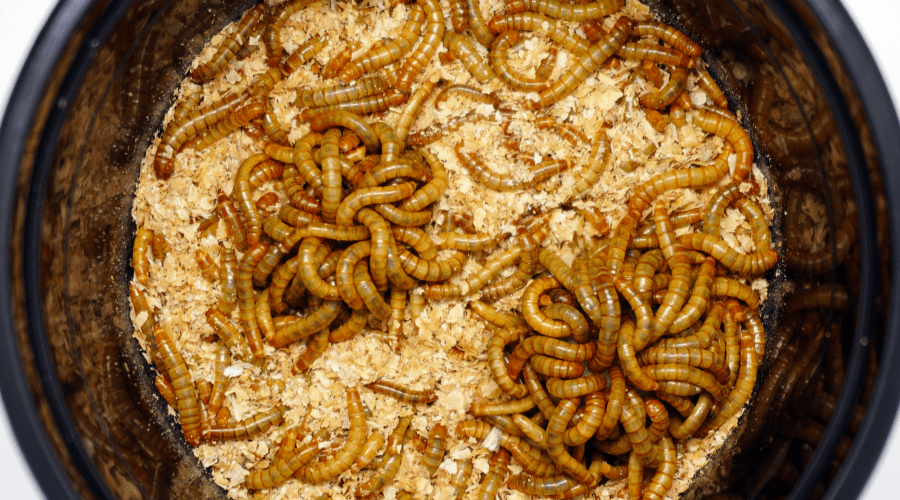Gut loading feeder insects is an important part of providing proper nutrition for reptiles and amphibians being fed live prey. By feeding nutritious foods to insects before using them as feeders, the nutrients are passed on to the predator when consumed. There are a few key things to understand about gut loading insects to do it effectively.
Why Gut Load Feeder Insects?

Insects like crickets, mealworms, and roaches are naturally low in certain nutrients essential for reptiles and amphibians. Calcium, vitamins A and D3, and certain fatty acids are commonly deficient. Gut loading changes the nutrient composition of the insects to provide a more balanced meal for the animal being fed. This helps prevent nutritional deficiencies that can lead to health issues.
What to Feed for Gut Loading
- High calcium foods – Calcium is essential for most reptiles and amphibians for bone health and cellular functions. Good options include spinach, collard greens, mustard greens, turnip greens, dandelion greens, kale, okra, and broccoli. Dusting with calcium powders is also recommended.
- Vitamin A sources – Carrots, sweet potatoes, papaya, mango, and winter squash supply beta carotene that gut loaded insects can convert to vitamin A.
- Grains and legumes – Insect feed including wheat bran, oats, rice bran, legume flakes, and fish food provide carbohydrates, protein, and micronutrients.
- Dry dog or cat food – Some keepers recommend using high quality dry kibble to gut load insects with protein and nutrients.
- Fruits and veggies – A variety provides a good nutrient profile. Favorites are potato, apple, orange, melon, tomato, zucchini, and berries. Avoid iceburg lettuce as it has limited nutrients.
- Water crystals – Providing hydrating gels gives insects needed water.
Best Practices for Gut Loading
- House insects individually by species. Crickets, roaches, silkworms each have different gut loading needs.
- Clean cages and provide fresh gut loading diet daily. Remove old food to prevent mold.
- Feed gut loading diet 24-48 hours before feeding off insects. Insects need time to digest food and incorporate the nutrients into their tissues.
- Use variety in diet components. Rotate different fruits, vegetables, grains and calcium sources for a varied nutritional profile.
- Adjust diet based on life stages. Young, growing feeders may benefit from more protein while adults do better with more veggies.
- Monitor insect health. Gut loading places nutritional demands on feeders. Keep them in optimal conditions.
- Time gut loading appropriately. Longer than 48 hours risks insect starvation and death which negates benefits.
Benefits of Proper Gut Loading
Gut loading feeder insects takes some additional effort but provides key advantages.
- Improves nutrition of feeder insects as food for reptiles and amphibians
- Can prevent nutritional deficiencies and health issues in reptiles and amphibians
- Allows use of feeder insects as a sole or primary diet for some species
- Makes feeder insects more nutritious and “complete” meals
- Saves money over purchasing vitamin gut loaded insects
- Allows tweaking gut load for life stage or species specific nutritional needs
Overall, gut loading helps feeder insects fulfill their role as nutritious food for reptile and amphibian pets. Following best practices ensures gut loaded insects provide balanced nutrition. It is recommended to gut load insects 2-3 times before feeding for optimal benefit.
FAQs
How long should feeder insects be gut loaded before feeding?
Feeder insects should be gut loaded for at least 24 to 48 hours before feeding to maximize nutrient transfer. This allows them to consume and digest nutritious foods, improving their nutritional value for the reptiles or amphibians they’re intended for.
Are there commercial gut loading products available?
Yes, there are commercial gut loading products designed to enhance feeder insect nutrition. These products often contain a mix of vitamins, minerals, and beneficial nutrients, simplifying the gut loading process for reptile and amphibian keepers.
Can gut loading enhance the nutritional value of feeder insects?
Absolutely, gut loading significantly enhances the nutritional value of feeder insects. By providing a nutritious diet to the insects before they’re consumed by reptiles or amphibians, you ensure that these nutrients are passed on, improving the overall diet of your pets.
Are there any risks or drawbacks associated with gut loading?
There are minimal risks associated with gut loading when done correctly. However, inadequate gut loading or using contaminated foods can introduce harmful substances to the lizard’ diets. It’s essential to use appropriate foods and maintain hygiene when gut loading feeder insects.
Do different reptiles and amphibians have specific gut loading requirements?
Yes, various reptile and amphibian species have specific dietary requirements. Some may benefit from certain gut-loaded foods more than others. Research the specific needs of your pets to tailor the gut loading process accordingly.
What are the signs of well-gut-loaded feeder insects?
Well-gut-loaded feeder insects exhibit a plump appearance, indicating they’ve consumed and stored nutrients. Their color may be more vibrant, and they should be active. Feeder insects that are well-hydrated and have consumed a balanced diet are ideal for your reptiles or amphibians.



